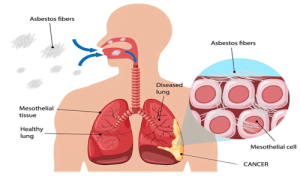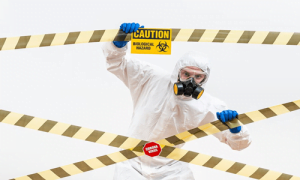Occupational disease is a term that sometimes goes unnoticed in the midst of our hectic workdays, yet it represents a silent and potent hazard hiding within our workplaces.
As we dedicate a significant portion of our lives to our jobs, it’s imperative that we become acquainted with the potential risks and consequences of occupational disease.
In this article, we will delve into the world of occupational disease, investigating the sneaky nature of these health dangers and throwing light on the critical need to treat and minimize them in our work settings.
Understanding the dynamics of occupational disease is essential not only for personal well-being, but also for ensuring a safe and healthy workforce.
Understanding Occupational Diseases

Occupational diseases are health conditions that result from exposure to risk factors in the workplace.
These diseases can develop over time, and in many cases, workers may not even be aware of the harm they are exposed to.
Unlike a workplace accident, where the effects are immediate, occupational diseases often manifest after a long incubation period.
Recognizing The Threat of Occupational Disease

The most challenging aspect of occupational diseases is their subtlety.
Workers may not connect their health issues to their job, making it crucial for employers and employees to recognize the symptoms and potential risks.
Some common occupational diseases include:
1. Silicosis

Silicosis is a kind of pulmonary fibrosis produced by inhaling microscopic particles of silica, a mineral present in sand, quartz, and many other types of rock.
The majority of cases of silica illnesses are found in workers exposed to silica dust in the mining and construction industries.
Exposure to silica particles produces scarring in the lungs over time, which can impair your capacity to breathe.
2. Asbestosis

Asbestosis is a chronic lung illness induced by asbestos fiber inhalation.
Formerly asbestos was a common ingredient in cement, insulation, and some floor tiles. It is a naturally occurring mineral that is resistant to heat and corrosion.
Prolonged exposure to these fibers can induce scarring of lung tissue and shortness of breath.
Asbestosis symptoms can range from minor to severe and typically manifest many years after initial exposure.
3. Noise-Induced Hearing Loss

Noise-induced hearing loss (NIHL) happens when structures in the inner ear are destroyed as a result of exposure to loud noises.
The sounds in our everyday surroundings, such as TV, traffic, and ambient conversations, are usually at a safe level.
Individuals who attend loud concerts or listen to music at high volumes through headphones are more vulnerable to NIHL.
Not only that, those who work in noisy workplaces are also particularly vulnerable to NIHL.
The following industries, according to the Centers for Disease Control (CDC), have the highest risk of noise-induced hearing loss:
- Agriculture
- Carpentry
- Mining
- Oil or gas extraction
- Construction
- Military
However serious it sounds, unlike other types of hearing loss, NIHL can be preventable.
Related Article: ENT Specialist: Hearing Problems and Workers at Risk!
4. Occupational Dermatitis
Occupational dermatitis is a skin condition induced by contact with certain chemical compounds at work.
As a result, it is known as contact dermatitis. It can have long-term effects on workers’ health and, in severe situations, their ability to continue working.
According to research, up to 50% of affected workers will still have skin problems ten years after the condition initially appears.
5. Occupational Stress

Occupational stress refers to the ongoing or increasing stress that a person experiences as a result of the obligations, conditions, condition, or other weights of the working environment.
There are various types of occupational stress, depending on the particular worker, their active job, the organization culture, and so on.
The physiological and physical effects of negative movement at the workplace are caused by a variety of factors such as external events, internal events, work requests, and associated behavior.
Causes of Occupational Diseases
Occupational diseases can be caused by a wide range of factors, including:
1. Exposure to Harmful Substances

Many industries involve working with dangerous substances, such as chemicals, toxins, and pollutants.
Prolonged exposure to these substances can lead to various health issues.
2. Poor Ergonomics
Improper workplace ergonomics can result in musculoskeletal disorders.
Employees who spend long hours at their desks or workstations are at risk.
3. Biological Hazards
Healthcare professionals, lab workers, and agricultural employees face biological hazards daily, increasing their susceptibility to diseases.
Protecting Yourself and Your Workforce
Prevention is the key to tackling occupational diseases. Implementing safety measures and raising awareness within the workplace can go a long way in protecting employees.
1. Safety Measures
- Regular Health Screenings: Regular health check-ups can detect early signs of occupational diseases.
- Adequate Ventilation and Protective Gear: Ensuring a well-ventilated workspace and providing appropriate protective gear can minimize exposure risks.
- Ergonomic Workstations: Creating ergonomic workstations can reduce the risk of musculoskeletal disorders.
- Stress Management Programs: Employers can promote stress management programs to support employees in dealing with workplace pressures.
2. Employee Education
Educating employees about the risks of their occupation is essential.
This includes making them aware of the potential hazards, symptoms to look out for, and the importance of reporting any health issues promptly.
3. Regulatory Compliance
Employers must comply with occupational safety regulations and standards to create a safe work environment.
Failure to do so can result in legal consequences and harm to both workers and the company.
4. Regulatory Compliance
Employers must comply with occupational safety regulations and standards to create a safe work environment.
Failure to do so can result in legal consequences and harm to both workers and the company.
The Bottom Line
Occupational diseases are the silent threats that lurk within the workplace, impacting individuals, businesses, and society at large.
By understanding the causes, recognizing the symptoms, and taking proactive measures, we can mitigate the risks associated with these diseases.
Prevention and awareness are our best tools to ensure a healthy and productive workforce.
All of this can be prevented by relying on OHPlus to provide guidance and advisory from employer and employee perspective.

With OHPlus, you can prevent occupational disease by getting instant access to a large pool of highly qualified occupational health professionals that can help you manage employee’s welfare regarding this issue.
Save your money and let OHPlus do all the work for you, and focus on your business as well as enjoy the improvement of productivity.
You can protect and ensure your employees’ welfare by subscribing to:
- Audiometric Screening
- Audiometric Diagnostic
- OHD Examination
- ENT/Audiologist Services
- Fitness To Work
- Return To Work
- Medical Surveillance
- OH Consultation
Subscribe to OHPlus today and experience the benefits of an end-to-end OH Solution.


